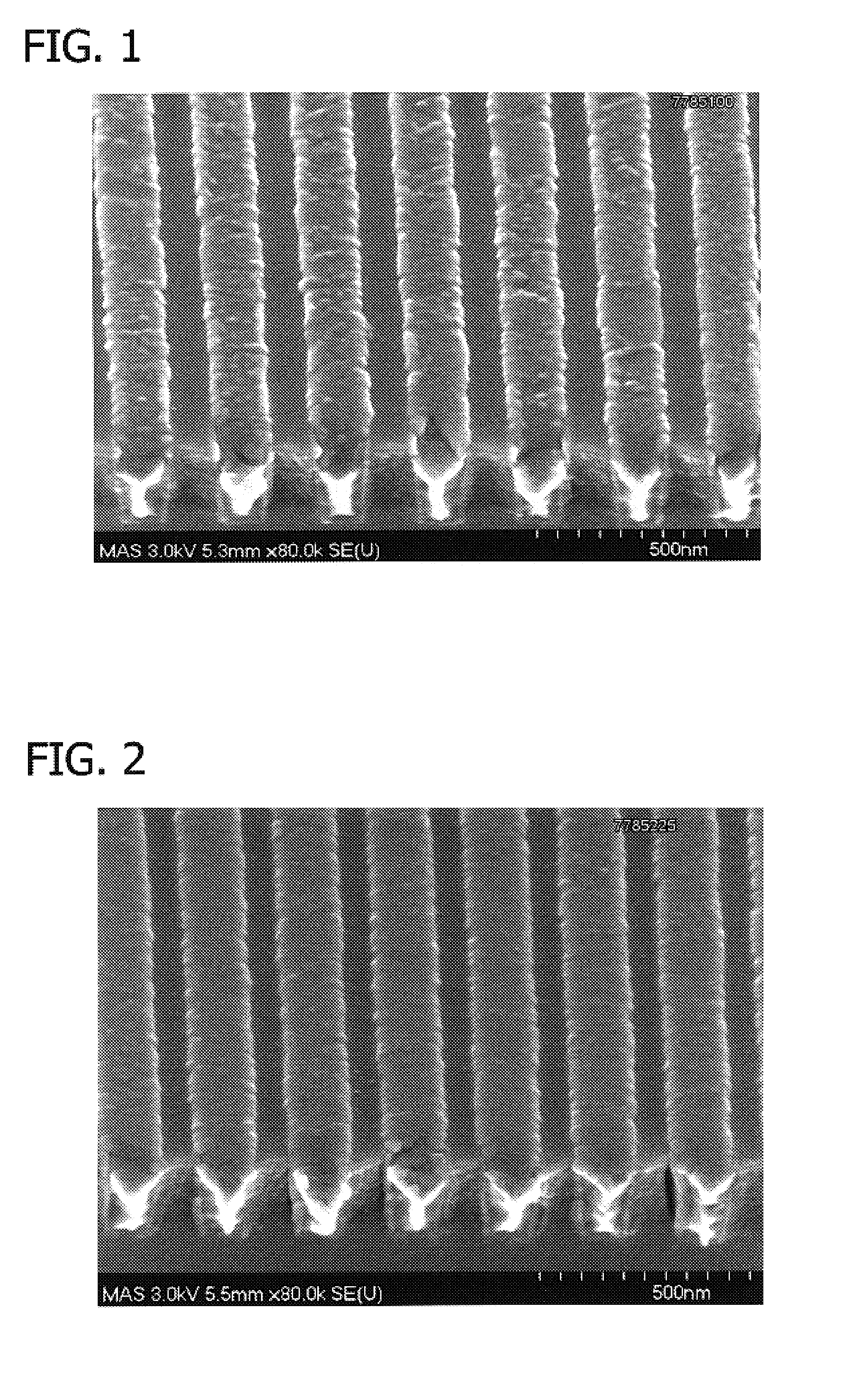Cobalt and nickel electroless plating in microelectronic devices
a microelectronic device and electroless plating technology, applied in the direction of superimposed coating process, resistive material coating, liquid/solution decomposition chemical coating, etc., can solve the problems of short circuit, electrical short circuit, and device damage,
- Summary
- Abstract
- Description
- Claims
- Application Information
AI Technical Summary
Benefits of technology
Problems solved by technology
Method used
Image
Examples
example 1
[0053]According to the present invention, a first electrolees plating bath was prepared comprising the following components:[0054]23 g / L of CoSO4.7H2O[0055]21 g / L of Nah2PO2.H2O[0056]31 g / L of Ha3BO3 [0057]100 g / L of Na3C6H4O7.2 H2O[0058]30 g / L Na2WO4.2H2O[0059]0.05 g / L of RHODAFAC RE610(manufactured by Rhone-Poulenc)[0060]0.01 g / L of Hydrazine Balance of DI water to 1 L
[0061]This bath was prepared at room temperature. The components were added according to the following steps:[0062]1. 23 g of CoSO4.7H2O dissolved in water.[0063]2. 100 g of Na3C6H4O7.2H2O added to complex Co2+ions.[0064]3. Remaining ingredients added, except hydrazine, in no particular order.[0065]4. pH adjusted to about 9.0 with TMAH.[0066]5. Hydrazine added.
[0067]Solution is filtered to remove any solids.
[0068]For comparison, a second electroless plating bath was prepared according to the same sequences of steps, having the same components except for the hydrazine-based leveling agent. The bath had the following c...
example 2
[0077]According to the present invention, ternary alloys consisting of Co—W—P were electrolessly deposited from the electroless plating baths of Example 1 onto a patterned copper silicon substrate.
[0078]The starting substrate was made of silicon. The substrate had exposed patterned Cu wires embedded in Ta / TaN stack barrier surrounded with interlevel dielectric (ILD) made of SiO2-based material. Cu features protruding over ILD about 33 Angstroms had a roughness of 5 Angstroms.
[0079]The patterned copper silicon substrate was exposed to a preclean solution that may be, for example, 10% sulfuric acid solution to remove post-CMP inhibitor residues, copper (II) oxide layer, and post-CMP slurry particles from ILD. It was then rinsed in deionized (DI) water, and subsequently activated with Pd.
[0080]To plate the alloy, the substrate was immersed in the Co—W—P electroless deposition solutions of Example 1. To illustrate the advantages of the hydrazine-based leveling agent according to the pre...
example 3
[0084]The difference in surface roughness achieved in a Co—W—P layer deposited from an electroless plating bath comprising a hydrazine-based leveling agent in accordance with the invention as compared to a plating bath without hydrazine can be seen by referring to FIGS. 1 and 2. FIGS. 1 and 2 are SEM photographs of Co—W—P capping layers at a magnification of 80,000×. The smooth surface of FIG. 2 exhibits the Co—W—P layer deposited in accordance with the present invention, i.e., a bath containing hydrazine. FIG. 1 exhibits the Co—W—P layer deposited by a plating bath that does not contain hydrazine.
[0085]A Co—W—P capping layer that exhibits the surface smoothness and planarity of the layer shown in FIG. 2 is smooth enough as deposited to function as a diffusion barrier layer over a Cu interconnect feature, with substantially reduced risk of electrical short either immediately after deposition or during the service life of the interconnect feature.
[0086]The Co—W—P capping layer of FIG...
PUM
| Property | Measurement | Unit |
|---|---|---|
| thickness | aaaaa | aaaaa |
| surface roughness | aaaaa | aaaaa |
| concentrations | aaaaa | aaaaa |
Abstract
Description
Claims
Application Information
 Login to View More
Login to View More - R&D
- Intellectual Property
- Life Sciences
- Materials
- Tech Scout
- Unparalleled Data Quality
- Higher Quality Content
- 60% Fewer Hallucinations
Browse by: Latest US Patents, China's latest patents, Technical Efficacy Thesaurus, Application Domain, Technology Topic, Popular Technical Reports.
© 2025 PatSnap. All rights reserved.Legal|Privacy policy|Modern Slavery Act Transparency Statement|Sitemap|About US| Contact US: help@patsnap.com


